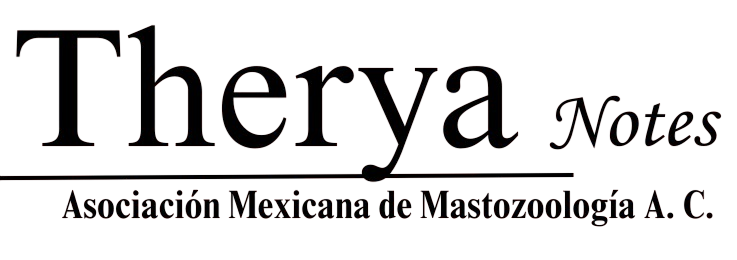First records of hypopigmentation of Tayra Eira Barbara in Colombia
DOI:
https://doi.org/10.12933//therya_notes-25-199Keywords:
Andean, camera traps, color aberration, Neotropical mammals, OrinocoAbstract
Leucism, xanthism, and piebaldism are genetic conditions that generate deficiency in animal melanin deposits or hypopigmentation, which can manifest in the total or partial absence of pigmentation in the integumentary tissue. In Colombia, there are few records of this condition in mammals such as bats and rodents. Nevertheless, this condition also occurs in mustelids, and the information is scarce for any biogeographic region of Colombia. We used data derived from different surveys with camera trap studies across 5 departments in 2 biogeographic regions in Colombia (Andean and Orinoco). The species was identified by external characteristics and the color aberrations following specialized literature. With a sampling effort of 11,015 camera/days, and one ad libitum observation, we described 10 cases of hypopigmentation in tayras which might be related to leucism, xanthism, and white spots or piebaldism. In addition, other abnormalities such as taillessness and light gray coloration were found. Our records constitute the first documented cases of hypopigmentation of tayras in Colombia and analyzed evidence of potential anomalies in wild populations living in transformed habitats. We intended to highlight these particular colors of the phenotypes in the species as a consequence of genetic mutations and environmental pressures. Finally, we also complement some aspects of their natural history.
Downloads
Published
How to Cite
Issue
Section
License
THERYA NOTES is based on its open access policy allowing free download of the complete contents of the magazine in digital format. It also authorizes the author to place the article in the format published by the magazine on your personal website, or in an open access repository, distribute copies of the article published in electronic or printed format that the author deems appropriate, and reuse part or whole article in own articles or future books, giving the corresponding credits. The Creative Commons CC BY-NC-SD license is used.![]()















